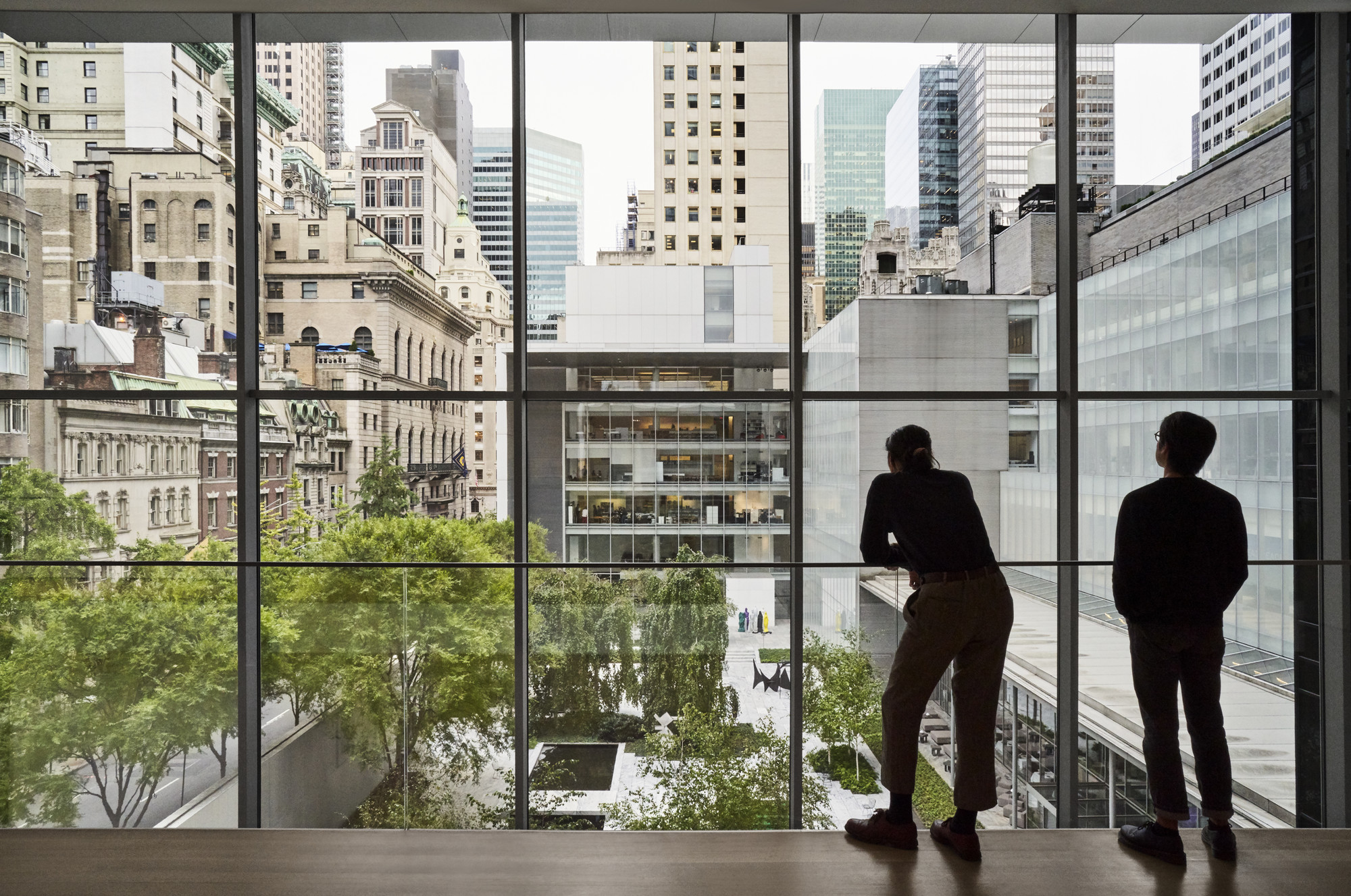About us

MoMA Mission statement
Founded in 1929 as an educational institution, The Museum of Modern Art is dedicated to being the foremost museum of modern art in the world.
Through the leadership of its Trustees and staff, The Museum of Modern Art manifests this commitment by establishing, preserving, and documenting a permanent collection of the highest order that reflects the vitality, complexity and unfolding patterns of modern and contemporary art; by presenting exhibitions and educational programs of unparalleled significance; by sustaining a library, archives, and conservation laboratory that are recognized as international centers of research; and by supporting scholarship and publications of preeminent intellectual merit.
Central to The Museum of Modern Art’s mission is the encouragement of an ever-deeper understanding and enjoyment of modern and contemporary art by the diverse local, national, and international audiences that it serves.
To achieve its goals The Museum of Modern Art recognizes:
- That modern and contemporary art originated in the exploration of the ideals and interests generated in the new artistic traditions that began in the late nineteenth century and continue today.
- That modern and contemporary art transcend national boundaries and involve all forms of visual expression, including painting and sculpture, drawings, prints and illustrated books, photography, architecture and design, and film and video, as well as new forms yet to be developed or understood, that reflect and explore the artistic issues of the era.
- That these forms of visual expression are an open-ended series of arguments and counter arguments that can be explored through exhibitions and installations and are reflected in the Museum’s varied collection.
- That it is essential to affirm the importance of contemporary art and artists if the
- Museum is to honor the ideals with which it was founded and to remain vital and engaged with the present.
- That this commitment to contemporary art enlivens and informs our evolving understanding of the traditions of modern art.
- That to remain at the forefront of its field, the Museum must have an outstanding professional staff and must periodically reevaluate itself, responding to new ideas and initiatives with insight, imagination, and intelligence. The process of reevaluation is mandated by the Museum’s tradition, which encourages openness and a willingness to evolve and change.
In sum, The Museum of Modern Art seeks to create a dialogue between the established and the experimental, the past and the present, in an environment that is responsive to the issues of modern and contemporary art, while being accessible to a public that ranges from scholars to young children.

MoMA history
MoMA PS1, one of the oldest and largest nonprofit contemporary art institutions in the United States, was founded in 1971 by Alanna Heiss as the Institute for Art and Urban Resources Inc., an organization devoted to organizing exhibitions in underutilized and abandoned spaces across New York City. In 1976, it opened the first major exhibition in its permanent location in Long Island City, Queens, with the seminal Rooms exhibition. An invitation for artists to transform the building’s unique spaces, Rooms established the MoMA PS1 tradition of transforming the building’s spaces into site-specific art that continues today with long-term installations by James Turrell, William Kentridge, Pipilotti Rist, Lawrence Weiner, and others.
For the next 20 years, the building was used as studio, performance, and exhibition space, in support of artists from around the world. After a building-wide renovation, P.S.1 Contemporary Art Center (now MoMA PS1) reopened in 1997, confirming its position as the leading contemporary art center in New York. True to the building’s history and form, the renovation preserved much of the original architecture, as well as most of its unique classroom-sized galleries.
In 2000, P.S.1 Contemporary Art Center became an affiliate of The Museum of Modern Art to extend the reach of both institutions, and combine MoMA PS1’s contemporary mission with MoMA’s strength as one of the greatest collecting museums of modern art.
A true artistic laboratory, MoMA PS1 aspires to maintain its diverse and innovative activities to continue to bring contemporary art to international audiences.

Get invovled
Bringing diverse communities closer to art and exposing audiences to new ideas is exciting and inspiring work, and we are always looking for dedicated and creative staff, interns, and volunteers who are up to the challenge. Learn more about how you can join the team.
Internships
Work with MoMA curators and educators and gain experience in the museum field.
- Learn about our mission, collections, and organizational systems
- Gain practical and theoretical training in museum work
- Contemplate the role of museums in contemporary society
- That it is essential to affirm the importance of contemporary art and artists if the
- Museum is to honor the ideals with which it was founded and to remain vital and engaged with the present.
- Work closely with a member of the MoMA staff
- Attend curator talks and a weekly lecture series
Jobs
Established in 1929, The Museum of Modern Art is the world’s preeminent institution dedicated to the art of our time. With a dynamic exhibition program and one of the world’s largest collections of modern and contemporary art, MoMA bridges the past and present, the established and the experimental, bringing new ideas to over three million onsite visitors per year—and many more millions in the digital realm. We offer an exciting, inclusive work environment for innovative, talented individuals who are eager to take part in MoMA’s mission, responding to new ideas and initiatives with insight, imagination, and intelligence.
Contacts
Address
Kalnciema street 186, Marupe district, LV-2167, Latvia
Phone
+371 29234567